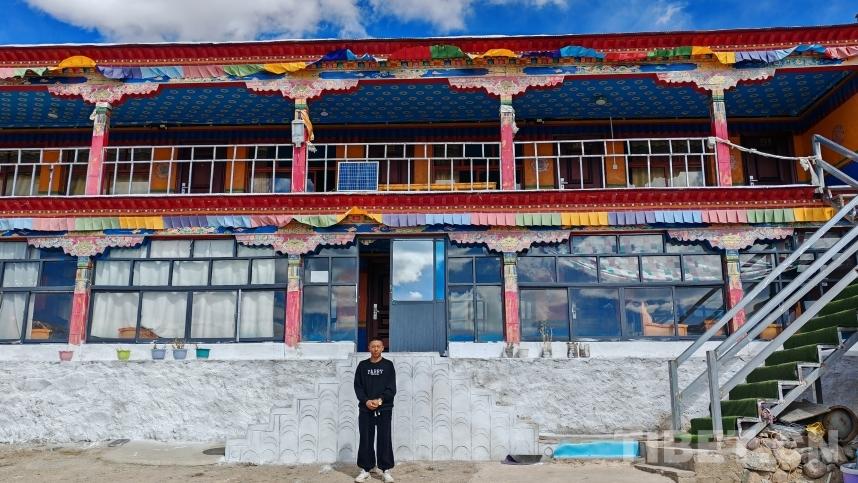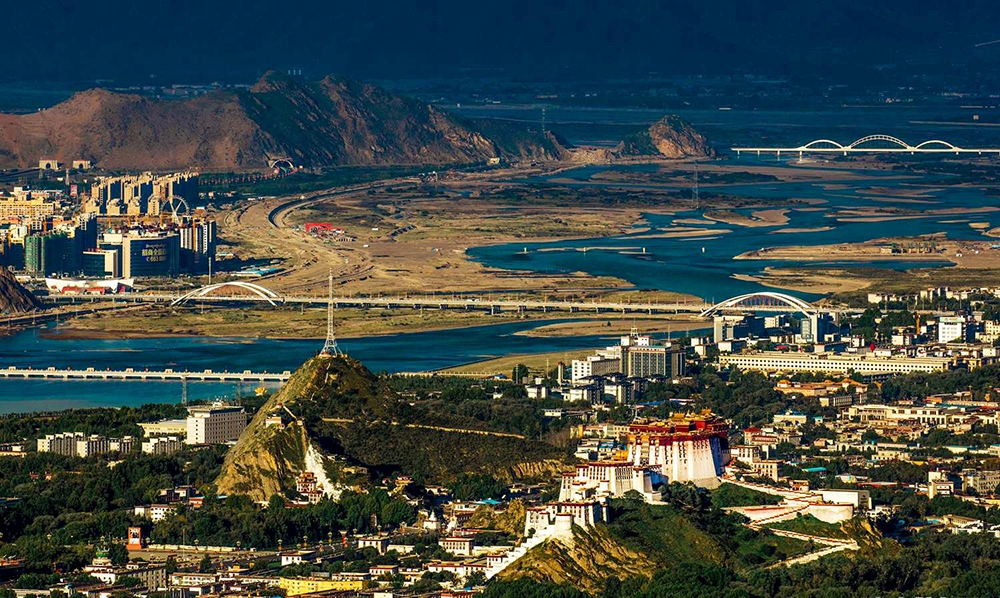The Fifth Reting Rinpoche: Scripture as Weapon, Chanting as War Drum
“JAPAN SURRENDERED!”
On August 15, 1945, Ta Kung Pao announced the historic news with a striking front-page headline in oversized characters—Japan had officially declared its unconditional surrender. What a moment of complete victory of China’s resistance against imperial Japan!
The Chinese People’s War of Resistance Against Japanese Aggression (1931-1945) marked an awakening in which the Chinese nation rose up against brutal oppression. It was a great wall of resistance built by the courage and sacrifice of hundreds of millions of Chinese people—a war of justice that defended the nation’s dignity through unity and bloodshed, writing an enduring epic in its national spirit.
Amid the crisis threatening China’s very survival, the Fifth Reting Rinpoche (1912-1947) —one of the most eminent monks of Tibetan Buddhism—rose above religious and secular divides to join the wave of anti-imperialist and patriotic resistance. He took a courageous stand, becoming a powerful symbol of Tibetan Buddhism community’s devotion to the nation.
The land may not speak, but it does not forget. On September 18, 1931, Japanese forces brazenly instigated the infamous Mukden Incident , sending shockwaves across China and around the world. In its wake, China’s three northeastern provinces, Liaoning, Jilin and Heilongjiang, were swiftly occupied. From that moment, vast stretches of China’s territory fell under Japanese control. The invasion brought with it brutal massacres and plundering, aimed at the total destruction of the Chinese state and its people. The aggressors pursued a policy of genocide—to crush the people’s spirit, to plunder the land’s resources, and to annihilate the Chinese nation’s existence—attempting to extinguish national identity itself.
During the Chinese People’s War of Resistance Against Japanese Aggression, the Fifth Reting Rinpoche led monks, lay followers, and local communities in organizing three large-scale prayer assemblies. In an appeal to the Nanjing National Government, he proclaimed the purpose of these rituals: “Let us chant aloud the sacred verses—prayers for our army’s triumph, curses for the Japanese invaders’ swift destruction—reciting without a day of cease until final victory is won.”
On the snow-covered plateau, scriptures became weapons and the chanting echoed like a war drum—an expression of the Tibetan people’s support for the resistance and their earnest hope for motherland’s victory and a return to peace.
During the War of Resistance, the Fifth Reting Rinpoche had always been a steadfast patriot and a resolute fighter against all foreign aggression.
In 1934, the Fifth Reting Rinpoche assumed the position of Regent. Since the beginning of his regency, British and American imperialist forces accelerated efforts to implement their plans to encroach on Xizang. In response to the unreasonable demands and aggressive intentions of these foreign powers, the Fifth Reting Rinpoche led monks, lay followers, and local communities in a firm resistance.
He moved decisively to weaken pro-British and American factions among Xizang’s upper class, dismissing or punishing those deemed to have betrayed national interests, and rooting out internal collaborators involved in intelligence activities linked to British and American imperialist forces. He also actively supported patriotic Tibetan monks and lay followers, strongly opposed British attempts to establish schools in Lhasa, and declared to the national government officials stationed in Xizang that he would “not allow sovereignty to be compromised for a single day under his watch”.
The Fifth Reting Rinpoche’s efforts to resist imperialism and safeguard the country were far beyond what is mentioned.
Immediately after assuming the regency, he reported the death of the Thirteenth Dalai Lama and his own appointment to the national government, and expressed strong support for its policies to establish the branch office of the Mongolian and Tibetan Affairs Commission in Lhasa, demonstrating deference to central authority. He also submitted several reports to the central government regarding the search for the reincarnated soul boy of the Thirteenth Dalai Lama, strengthening ties between Xizang’s local government and the central government, and defending the central authority’s fundamental and safeguarding role in the recognition of reincarnations.
He helped defuse social tensions by mediating local disputes and worked to resolve the decade-long Dajin Temple and Baili Village Incident, which had long strained ties between the central government and Xizang’s local government. His actions made significant contributions to consolidating and stabilizing the rear lines, safeguarding national security, maintaining resistance against Japanese aggression, and advancing the broader war effort.
Despite his outspoken support for national interests, the Fifth Reting Rinpoche was ultimately imprisoned at the young age of 36. In 1947, acting on orders from the British, pro-British separatist forces in Xizang arrested him on fabricated charges of “plotting a rebellion” and confined him in the Potala Palace.
According to a former prison guard, the Gaxag (Tibetan name of the local government of Xizang) under the control of pro-British figure Taktra Ngawang Sungrab subjected the Fifth Reting Rinpoche to psychological and physical abuse before ultimately poisoning him. During an interrogation, the Gaxag authorities reportedly questioned him: “Why is Xizang pro-China?” To which he responded, “After the British colonel Francis Younghusband invaded Lhasa in 1904, it was China that paid the military indemnity. Xizang was redeemed with China’s money.” He maintained unwaveringly that Xizang was part of China and fundamentally opposed to separatism.
Patriotism and religious faith marked the life of the Fifth Reting Rinpoche. His assassination exposed the separatists’ disregard for national interests, their betrayal of religious kinship, and their collusion with imperialist forces. His death further underscored the unyielding spirit of patriotic religious leaders in times of national crisis. Though he did not take up arms on the battlefield during the Chinese People’s War of Resistance Against Japanese Aggression, the Fifth Reting Rinpoche built a spiritual stronghold on the snow-covered plateau, defending the unity of the motherland and its people through religious leadership.
During the same period, countless figures throughout the Tibetan Buddhist community stepped forward to join the Chinese People’s War of Resistance Against Japanese Aggression with courage. The Ninth Panchen Erdeni called on both monks and lay followers in Shanghai, Beijing, and beyond to resist Japanese aggression; the Fifth Gedar Tulku supported the Red Army’s northward movement to join the resistance, while the Fifth Jamyang Hutuktu provided financial support for the anti-Japanese efforts. Anti-Japanese monastic groups also formed on Mount Wutai.
Although the war ended 80 years ago, the Tibetan Buddhist community’s heroic contributions to the united front in defense of the nation and the benefit of its people have long been woven into the collective memory of the Chinese nation.
The Chinese nation tolerates no demeaning treatment, and Xizang remains an inseparable part of China. Today, as the country advances toward the great rejuvenation, the message embodied by the Fifth Reting Rinpoche at the cost of life has become even more evident: Patriotism has always been a deeply rooted principle in Tibetan Buddhism. Any attempt by external forces to sow division or stir religious conflict under the guise of Tibetan Buddhism is destined to fail.
Stories

Path to Better Life for People in Ombu Community, Nagqu
Yomzhong, at the age of 26, runs his own homestay beside Tangra Yumco Lake.
Editor’s Choice
- Tibetan Merchants’ Patriotism in War of Resistance Against Japanese Aggression
- Reincarnation of Living Buddhas never decided by reincarnated individuals: signed article
- Lot-drawing ceremony is a traditional religious ritual and historical convention that must be upheld in reincarnation of Living Buddhas: signed article
- Religious rituals fundamental source of legitimacy for Living Buddha reincarnation: article
- Central government approval is fundamental principle, legal safeguard of Grand Living Buddha reincarnation: signed article

